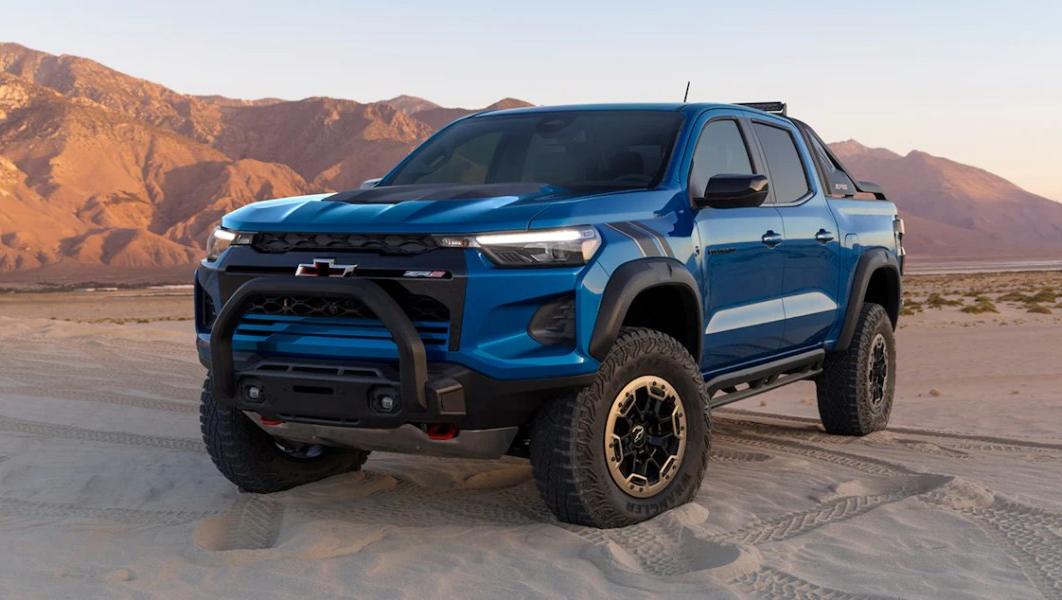Comparing Two Great Affordable Electric Vehicles

Why Buy a Bolt
Same but Different
Performance and Range
The Bolt EV offers more power and agility due to its slightly lighter weight of 3,589 pounds compared to the EUV's 3,679 pounds. The weight difference also translates into a minor difference in 0-60 acceleration times with the EV clocking in at a peppy 6.5 seconds and the EUV at a still respectable 7.0 seconds.
Largely due to the slight weight difference, the EV has a longer range than the EUV. The Bolt EV has an EPA-estimated range of 259 miles, while the Bolt EUV has an EPA-estimated range of 247 miles. Both models support Level 1, 2, and 3 charging connections and can gain approximately four miles of range per hour of charging at 120 volts and can fully charge in about seven and a half hours at 240 volts. However, when utilizing DC fast charging, the Bolt EV offers slightly better performance, gaining 100 miles of range in just 30 minutes, while the EUV achieves 95 percent of that figure.

Overall Size and Storage space
Surprisingly, the Bolt EV offers more cargo space than the Bolt EUV despite its smaller size. The Bolt EV provides 16.6 cubic feet of space behind the second row, which can expand to 57 cubic feet with the rear seats folded down. In comparison, the Bolt EUV offers 16.3 cubic feet of space behind the second row and 56.9 cubic feet with the rear seats folded. The Bolt EUV's sloping roofline accounts for the slight reduction in storage capacity.
Interior and Infotainment
In terms of exterior design, the Bolt EV and the Bolt EUV have distinct styling elements. The Bolt EV has a closed-off front end and a signature black accent, while the Bolt EUV features a slightly open front end and a more upright rear hatch and nose. The taillights and rear bumpers also differ between the two models. The Bolt EUV's design is more reminiscent of a crossover, while the Bolt EV embraces its hatchback identity.

Hands Free Driving in the EUV
Which is best for you?
For the most up-to-date and accurate information, it is advisable to consult the official Chevrolet website or contact our VALENCIA sales staff.
Frequently Asked Questions
A: The Bolt EV wins with its rated range of up to 259 miles on a full charge, while the EUV is rated for up to 247 miles. The difference is largely due to the heavier and larger frame of the EUV.
Q: What are the biggest differences between the Chevrolet Bolt EV and EUV?
A: The Chevy Bolt EV is a hatchback sedan and the Chevy Bolt EUV is a crossover SUV. The EV has a slightly increased driving range and offers less interior space. The EUV has more interior space and also comes with the hands-free Super Cruise as an available option.
Q: Which Bolt model has more passenger room? Which has more storage room?
A: The Bolt EUV comes with around 16 cubic feet of cargo space behind the rear seats and 97 cubic feet of passenger volume. In contrast, the Bolt EV has 93.9 cubic feet of passenger space with 16.6 cargo space feet behind said rear seats. Despite a smaller frame and less passenger room, the EV has a bit more cargo space.
Specifications
CHEVROLET BOLT EV & BOLT EUV PRELIMINARY SPECIFICATIONS (click to expand)
EFFICIENCY
| BOLT EV | BOLT EUV | |
| EPA-Estimated Driving Range^: | 259 miles (416 km) on a full charge | 247 miles (398 km) on a full charge |
^ Your actual range will vary based on several factors, including temperature, terrain, battery age and how you use and maintain your vehicle.
BATTERY SYSTEM
|
Type: |
Rechargeable energy storage system comprising multiple linked modules |
|
Mass (lb / kg): |
947 / 430 |
|
Battery chemistry: |
Lithium-ion |
|
Cells: |
288 |
|
Energy: |
65 kWh |
|
Warranty^: |
8 years / 100,000 miles of battery and electric components coverage |
^Limited warranty. Whichever comes first. See dealer for details.
ELECTRIC DRIVE
|
Type: |
Single motor and gearset |
|
Motor: |
Permanent magnetic drive motor |
|
Power: |
200 hp / 150 kW |
|
Torque: (lb-ft / Nm): |
266 / 360 |
|
Final drive ratio (:1): |
7.05:1 |
CHARGING TIMES^
| BOLT EV | BOLT EUV | |
|
120 V: |
4 miles of range in approx. 1 hour |
4 miles of range in approx. 1 hour |
|
240 V: |
Full charge in approx. 7 hours |
Full charge in approx. 7 hours |
|
DC Fast Charge: |
Up to 100 miles in 30 mins. |
Up to 95 miles in 30 mins. |
^Charging rate varies based on output of the charge unit, vehicle settings and outside temperature.
CHASSIS & SUSPENSION
| Front Suspension: |
Independent MacPherson strut-type with direct-acting solid stabilizer bar |
|
|
Rear Suspension: |
Compound crank (torsion beam) with coil springs |
|
|
Steering Type: |
Column-mounted electric power steering |
|
|
Turning Circle (wall-wall) |
34.8 / 10.62 |
38.3 / 11.66 |
|
Brake Type: |
Four-wheel disc with ABS; electro-hydraulic; partially regenerative |
|
|
Brake Rotor Size: |
Front: 15 / 276 vented |
|
|
Wheel Size: |
17-in. aluminum |
|
|
Tire Size: |
Michelin Energy Saver A/S 215/50R17 all-season |
|
EXTERIOR DIMENSIONS
| BOLT EV | BOLT EUV | |
| Wheelbase (in. / mm): |
102.4 / 2600 |
105.3 / 2675 |
|
Overall Length |
163.2 / 4145 |
169.5 / 4306 |
|
Overall Width |
69.5 / 1765 |
69.7 / 1770 |
|
Overall Height |
63.4 / 1611 |
63.6 / 1616 |
|
Track (in. mm): |
59.1 / 1501 (front) |
59.5 / 1511 (front) |
INTERIOR DIMENSIONS
| BOLT EV | BOLT EUV | |
| Headroom (in / mm): |
40.1 / 1018 (front - max) |
40.0 / 1016 (front - max) |
|
Legroom |
44.3 / 1124 (front - max) |
44.3 / 1124 (front - max) |
|
Shoulder Room |
54.6 / 1388 (front) |
54.6 / 1387 (front) |
|
Hip Room |
51.3 / 1303 (front) |
51.4 / 1305 (front) |
WEIGHTS & CAPACITIES
| BOLT EV | BOLT EUV | |
| Curb Weight (Min) (lb. / kg): |
3,589 / 1628 (Min) |
3,679 / 1669 (Min) |
|
Passenger Volume (cu. ft. / L): |
93.9 / 2659 |
96.5 / 2734 |
|
Cargo Volume |
16.6 / 470 (behind rear seat) |
16.3 / 462 (behind rear seat) |
^ Cargo and load capacity limited by weight and distribution
Please note that these specs were released by GM in 2021 and minor differences may exist between what is listed above and the current 2023 versions of each model.
Popular Models

















